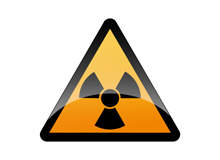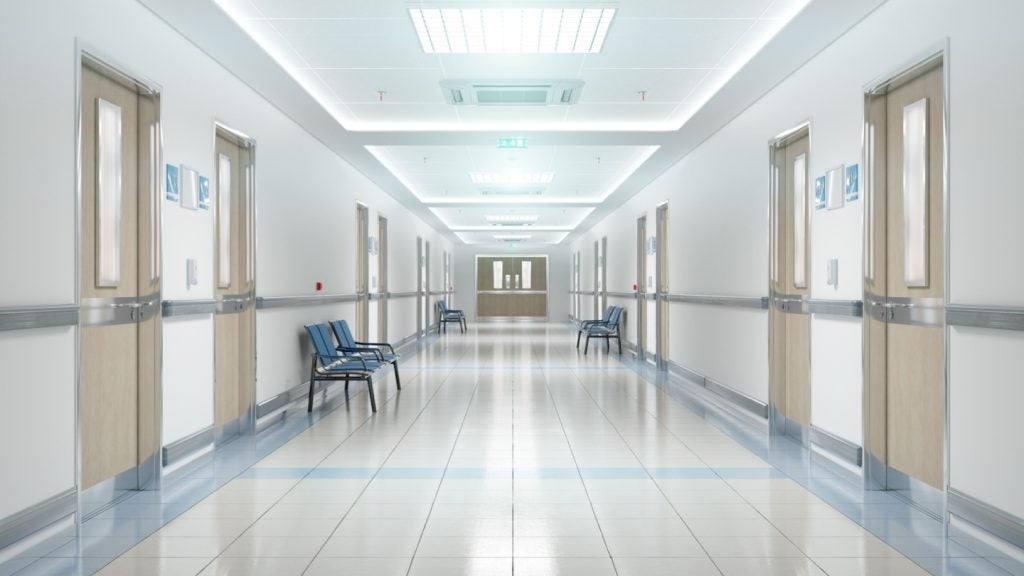
Currently, one in three patients admitted to a hospital gets a procedure that involves the use of radioisotopes. These include immunoassays, imaging procedures, and therapy. To date, the greatest expansion has been focused on the introduction and expansion of the use of positron emission tomography (PET), which provides better quantitative information on the uptake of the radiopharmaceuticals.
But the cost of the procedures and the radiopharmaceuticals is higher than we experience with single photon imaging. Right now, PET comprises only 10% of nuclear medicine procedures. While there is terrific opportunity in utilising PET to “personalise” medical diagnosis and staging, the current debate over healthcare reform and cost escalation has focused attention on PET and other high-cost medical imaging modalities.
Molybdenum-99
Low-energy, single-photon imaging is still the most frequently used nuclear medicine procedure in the world. Of the 20 million nuclear medicine studies performed per year in the United States, 18 million are performed using SPECT and 16 million use Technetium-99m (Tc-99m).
Worldwide, at least 80% of all nuclear medicine procedures use Tc-99m. The global medical community relies on five main nuclear reactors for the production of Molybdenum-99 (Mo-99). The location and the percent of the global market produced by each are as follows: Canada (33%), the Netherlands (32%), South Africa (15%), Belgium (6%), France (6%), with others supplying the remaining 8%, mostly for national or regional consumption. The average age of these reactors is 47 years. The United States uses 50% of all of the Mo-99 produced in the world to generate Tc-99m for imaging. Nearly all of the Mo-99 used in the US routinely comes from two reactors, one in Canada and the other in The Netherlands. The other three mentioned provide backup capabilities for Mo-99 production for the US market.
Currently, no facilities produce Mo-99 in the US. The other important point is that those reactors identified as “other” are not qualified to produce Mo-99 for consumption in the US, with the exception of a new reactor in Australia, which is still struggling with expanding their Mo-99 production to supply a small percentage of US needs.
How well do you really know your competitors?
Access the most comprehensive Company Profiles on the market, powered by GlobalData. Save hours of research. Gain competitive edge.

Thank you!
Your download email will arrive shortly
Not ready to buy yet? Download a free sample
We are confident about the unique quality of our Company Profiles. However, we want you to make the most beneficial decision for your business, so we offer a free sample that you can download by submitting the below form
By GlobalDataThe current production technology for Mo-99 consists of inserting targets of Uranium-235 into a reactor to induce fission. The targets are removed and the fission products are separated from the target, including Mo-99, Iodine-131 (I-131) and Xenon-133 (Xe-133). While Mo-99 consumption far exceeds the other two, there are important roles for them in medical applications.
One important observation on the production issue is to note the surplus production capacity of the NRU reactor in Canada. In addition to losing its production capability when it is offline, we also lose its ability to ramp up production when another reactor goes offline. So when NRU is not functioning, we see a decrease in production, plus an inability to provide back-up for the other four reactors in light of anticipated or unanticipated outages.
Other medical isotope uses
Despite the fact that the majority of nuclear medicine procedures are diagnostic, radioisotopes still have an important role in therapy. One of the earliest, and still most valuable, is the use of I-131 in treating thyroid cancer and hyperthyroidism. The affinity that iodide has for hypermetabolic thyroid tissue is the reason why it is so effective in treatment. In addition, I-131 labeled monoclonal antibodies are used to treat non-Hodgkin’s lymphoma. This application has not expanded as quickly as anticipated due to a variety of factors that would take another article to describe.
As attention is turned to the ever-expanding use of computed tomography (CT) for diagnosis, there has been concern over the dose delivered to certain organs and tissues in CT exams. One point has been the use of CT to diagnose pulmonary embolism and the dose to breast tissue. An alternative to this application is the use of a combination of nuclear medicine studies – one to assess ventilation using Xe-133 and the other to determine blood flow to the lungs using a Tc-99m-labeled material to map the vasculature of the lungs.
A mismatch in those two studies indicates that an embolism is present. The radiation dose to the breast is much lower using this technique compared to CT. Recent reports have indicated that both of these radioisotopes are in short supply due to the problems in production of medical isotopes.
Reactor shutdowns
The number of unscheduled shutdowns of reactors producing Mo-99 for generators used for Tc-99m has been increasing. Unanticipated interruptions led to major problems in the supply chain and in the eventual care of patients. Currently, the Canadian reactor is shut down after a leak detected in May 2009 led to a programme to investigate and repair leaks caused by corrosion related to the facility’s age.
The Canadian Government has stated that the reactor will be relicensed in 2011, but all production will cease in 2016. It is scheduled to be up and running early in 2010, although the estimates for the duration of the shutdown have been revised three times to last longer than previously expected. The reactor in the Netherlands was shut down for a few weeks during the summer of 2009 for preventive maintenance and is scheduled to be shutdown for four to six additional months starting in February 2010 for further preventative maintenance.
Bring new options online
There are several ways to increase the supply of Mo-99. The first is to try to increase the level of production in the other reactors. The simplest option is to increase the operation schedule of reactors in Belgium, France and South Africa. These reactors have been engaged in ongoing discussions to fill the gap when the Dutch reactor is offline this spring. But cost estimates approach $30m a reactor for the increase in fuel cost, additional operating expenses and radiation waste disposal. And these costs increase stress on these facilities, which are all about the same age.
The real bottleneck exists in the lack of processing facilities that have been approved by the US Food and Drug Administration (FDA) or other regulatory authorities. It is estimated that capacity could be increased by 40% in some instances if the processing facilities were expanded. In the US, there are several reactors that could be brought into use for reactor production of Mo-99, I-131 and Xe-133. However, the cost and logistics of transporting irradiated targets to Canada for processing have been an insurmountable hurdle to their use.
It has been proposed that the quickest way to establish a source in the US is by using the reactor at the University of Missouri to include Mo-99 production as part of its mission. The problem with this solution is that a processing facility has to be constructed. This would take 3.5 years to complete, with an estimated $100 million price tag. Babcock & Wilcox and Covidien partnered to develop the aqueous homogenous reactor, an old technology that would use a different mechanism to isolate the medically useful radioisotopes. The Canadian nuclear research facility TRIUMF partnered with Nordion and other groups are pursuing accelerator production of Mo-99, but both would be years away from being brought online, and a recent Canadian review has indicated little or no cost savings by pursuing this alternate technology.
In addition, some of the accelerator-based technologies will only produce Mo-99, without concurrent production of I-131 and Xe-133.
What is SNM doing?
SNM is working with Congress to promote four options for developing a domestic source of Mo-99, including the University of Missouri expansion and the Babcock & Wilcox / Covidien projects. Recently, we learned that the University of Missouri has elected to pursue other options than the government-funded programme. The National Nuclear Security Agency within the Department of Energy has been given primary responsibility for this programme.
SNM is petitioning the centres for Medicare and Medicaid Services for coverage for non-Tc99m methods of imaging, such as F-18 NaF bone scans. The authorities in Canada and Europe have been more proactive in expanding coverage for alternative PET imaging procedures to cover patient imaging needs during the shortage. There has been a substantial increase in the use of Thallium-201 for cardiac imaging as an alternative to Tc-99m. There has also been a shift in some cases to alternative imaging technologies, such as CT or MRI.
SNM is also trying to educate its membership on alternatives such as the Tl-201, as demonstrated by the review of cardiac imaging in recent publications, as well as articles on the SNM website that offer other suggestions. An entire generation of physicians and technologists has been trained in cardiac imaging with Tc-99m agents, so there has been a challenge in educating them in the differences. Obviously, if you are in the business of selling generators, you would like to have them rotate through the radiopharmacy as often as you can. However, in a time of shortage, one would like to be able to extend the useful life of the generator beyond its current limit, which is generally two weeks. In order to extend the expiry of the current Tc generators, the FDA would have to agree to the suitability of the product for patient imaging.
It would be ideal if we could get limited extensions beyond this point for some applications such as flood sources, linearity studies, and other uses that do not necessarily involve human administration but are still important to our being able to practice nuclear medicine in a responsible fashion. Our colleagues in Europe have proposed that we suspend all veterinary imaging in times of shortage.
SNM has also made clear to the producers that informing the nuclear medicine community about anticipated outages will facilitate appropriate scheduling, triage and other measures that can assist us in managing the imaging needs of our patients. Obviously, this is more difficult when we experience unexpected problems, but many of the problems we have experienced with the aging population of reactors are anticipated as their maintenance needs have increased, or we have seen short outages that still affect whether Mo-99 production will be at the usual levels.
Another challenge has been the expansion of the central radiopharmacy in the distribution chain in the US. It is incumbent that radiopharmacy also keeps the imaging sites up-to-date on the latest situation regarding Tc-99m, I-131 and Xe-133 availability.
What can you do?
Stay informed about potential dates of shortages through updates from the generator manufacturers. Being prepared to adjust your schedule and methodology of imaging procedures is a must in this environment. Nights and weekends should be included in scheduling for routine imaging studies. In times of Tc-99m shortage, we should all be proactive in the use of other radiopharmaceuticals to save the Tc-99m for those procedures that have no alternatives.







